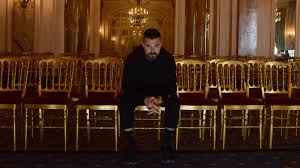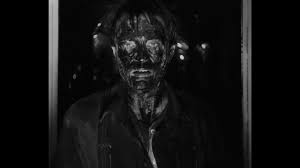On the March 20, The Film Society at the University of Lincoln had a screening of the critically acclaimed film ‘The Lighthouse’. The Lighthouse (2019) is a film produced, directed and co-written by Robert Eggers that will leave the viewer intrigued, shocked and completely shaken by what they just saw. For a film whose story is fairly easy enough to follow, it was hard to put it in to a single genre. It has some deadpan, inadvertent humorous moments fit for a comedy, and it also had some very disturbing imagery that rivals some of the most unnerving horror films. One thing is clear in terms of what The lighthouse has, and that’s a little bit of everything.

Including to two lead actors who are renowned for their diversity and ability to commit to their roles. Robert Pattison and Willem Dafoe. The two actors, of Batman and Spiderman fame, come together to tell the story of two troubled nineteenth-century lighthouse workers stranded on a remote island during a violet storm.
That’s it! And that could have been it, if not for various contributing factors that make it a very enthralling, unsettling experience. One of these factors being the casting of the two leads. When it comes to films that feature to actors who are on the same footing talent-wise, or have a history of making films together (think Robert De Niro and Al Pacino, David Spade and Chris Farley, and James Franco and Seth Rogan), Robert Pattison and Willem Dafoe are not two actors that one would instantly think would be able to create movie-magic together.
Pattison has made a name for himself as a serious actor who takes on diverse projects after the frustration he felt from being typecast as a result of starring in the Twilight Saga. His efforts to getaway from being the tortured heartthrob to an actor with real gravitas ultimately led him to take on the role as Bruce Wayne/Batman. He took this role on and received critical and commercial acclaim for it. This is especially impressive when one considers that Batman is a role that has become increasingly harder to fill with the rise of expectations that come from the love of the character. But, Pattison did it. Affleck, tried at the very least.
And then there’s Willem Dafoe. One thing that he shares with Pattison is that both of them have starred in successful superhero films. But Dafoe was a few steps ahead of Pattison in this regard. Twenty years ahead with his appearance as Norman Osbourne/ The Green Goblin. Dafoe starred in one of Marvel’s seminal films a decade before the great superhero film-boom of the 2010s, and he did it at a time when superhero films weren’t all the rage that they are now.
Aside from that, he differs from his co-star in that he has a tendency to be cast in roles that see him deranged, psychotic, and slightly off balance. No one plays mad quite like Dafoe. The only film that instantly comes to mind where he isn’t slightly insane is American Psycho, a film where, ironically, he is the only slightly normal person amidst a cast of insane characters.
With all this in mind it can be easy to write off putting a former heartthrob turned serious actor and an actor who’s in his element when he’s playing characters with a screw loose together as a simple case of miscasting. But, it works.

The two share a chemistry with each other that, though unexpected, is definitely welcomed. Both Pattison and Dafoe play off of each other very well, and in a way that doesn’t make one actor look as though they’re above the other. And this leads to another factor that makes the Lighthouse, and its stars’ performance excellent. And that’s the script.
The Lighthouse’s script is one that doesn’t need specific actors to perform it well. It stands alone on its own merit as a great script. The fact the talented actors like Pattison and Dafoe were given it only added to it being a great piece of writing.
The script itself is perfectly suited with the cadence/vocabulary of two lighthouse workers from this period and time. But, one thing that makes it stand out apart from the adherence to the vernacular that such characters would have in 19th century America is the sense of unease that comes with every line uttered from the two characters.
Pattison’s attempts to remain grounded during his stint at the lighthouse are constantly challenged by Dafoe’s eerie, almost foreshadowing tone. Whenever Dafoe speaks in this film you’re left to feel as though your seconds away from something really shocking happening, or, that what you’re worried about won’t happen for a long time, but it will. Either way you can’t escape the feeling that something has gone awry, or that as time goes on, something will.
The lighthouse is a film that unnerves you because on a lot of levels you can’t completely understand what is happening and why it’s happening. This sentiment was felt by one of the attendees of the film’s screening.
Zach Walker, 22, a student at the university studying chemistry, had heard great things about the film. He went into it expecting to watch maybe a horror, or something bad to happen. Watching one of the characters go from sane to insane was something he didn’t expect.
When asked about the films cryptic and ambiguous depiction of the slow demise of the relationship between the two lead actors Zach said that he: ‘enjoyed the ambiguity’, and that he liked not knowing the answers, despite the fact that the events of the film were not fully explained, leaving the viewer in a state of confusion.
Zack intimated that different genres of film do not require explicit explanations of what’s going on, and that usually the viewer has the power to piece things together without having to be told what’s happening. But that with The Lighthouse he waited for the explanation as to what was happening. Why was Robert Pattison chasing Willem Dafoe with an axe, what was in the lighthouse that Pattison ascended to near the climax of the film, and was it all a figment of Pattison’s character’s imagination. No explanation was given, and to Zack, with a film like this, that was fine.
Something else that helps The Lighthouse stand out is its surreal imagery. It’s hard to forget a film like this one once you’ve caught sight of rotting corpse heads and Willem Dafoe covered in barnacles. But, in some ways, this is something that some people would say holds the film back. Though The Lighthouse is not exactly tied down to a single genre, it wouldn’t be right to say it doesn’t lean into the type of cosmic horror that you would find in a H.P Lovecraft novel.
And this Lovecraftian/existential horror is something that delights in scaring people by playing on their fears of the unknown. When you restrict the viewer’s ability to fully understand the nature of the threat that the characters face you leave them at the mercy of their own imagination. Whilst showing something that can scare someone is effective, there’s nothing quite as fear inducing as the unknown. What you choose to not show an audience is far more effective than what you show them, because a person’s imagination can be a true source of horror when compared to what is explicitly shown on a movie screen.

The Lighthouse’s imagery is definitely disturbing, but such blatant shows of disturbing imagery actually downplay the movies ability to convey to the viewer the state of torture and despair that the two workers are falling into the more time they spend on the island.
The films repulsive imagery doesn’t necessarily hinder it, but it doesn’t take it forward either. The film could have been stripped of barnacle-covered Willem Dafoe, dirt-covered Robert Pattison screaming as he reaches into the lighthouse and still have been just as unsettling.
The Lighthouse is a film that really takes mans fear of isolation and his fear of that which he can’t fully comprehend and turns it up to eleven. It serves, as a cautionary tale of what the wrong environment and the wrong company can do to a man’s sanity. How paying too much attention to the chatter in our heads can distort our understanding of our place in the world and our role in it. Such things really do have the ability to leave us shocked, intrigued, and, completely shaken.

